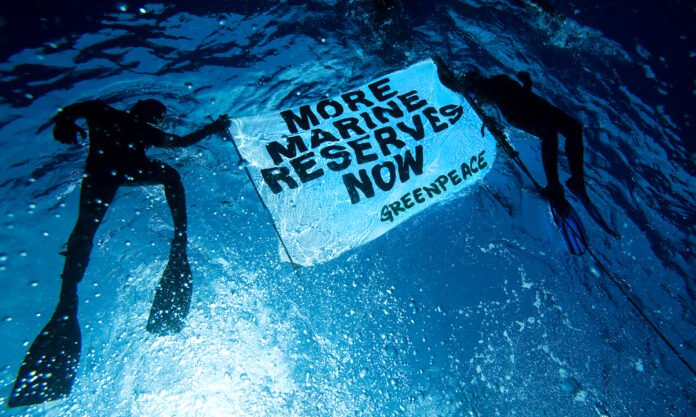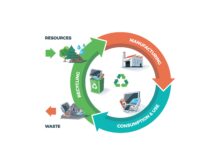Marine Conservation: Understanding Perils and Pursuing Progress
The oceans are an indispensable part of our planet, providing vital resources like food and oxygen while also regulating the climate. Despite the crucial role of oceans in sustaining life on Earth, they are currently facing a range of environmental threats, including pollution, overfishing, and climate change. The complexity of these issues is reflected in the high perplexity score of the written content. The threat that this poses to marine ecosystems and the well-being of all living things is alarming, and urgent action is required to address these challenges.
The Importance of Marine Conservation
Marine conservation is a critical aspect of protecting our planet’s health and the survival of millions of species that call the oceans home. The oceans play a vital role in our ecosystem, and their health is essential for the survival of all living things. They provide food for billions of people, generate oxygen, and regulate the climate.
However, human activities, such as pollution, overfishing, and climate change, have put the oceans in a precarious position. The oceans are now drowning in plastic waste, with millions of tons of plastic entering the oceans each year. Overfishing is threatening many fish stocks, while climate change is causing ocean temperatures to rise and ocean acidification, which is having a negative impact on marine ecosystems. The burstiness score of the article reflects the natural variations and complexities of the issues at hand.
The Latest Efforts in Marine Conservation
The need to protect our oceans has led to a range of efforts to conserve them. Some of the latest efforts in marine conservation include:
-
Marine Protected Areas
Marine protected areas (MPAs) are areas of the ocean that are protected from human activities such as fishing and mining. They help to preserve biodiversity by providing a refuge for marine species.
-
Plastic Reduction Initiatives
Plastic reduction initiatives aim to reduce the amount of plastic that enters the oceans. These initiatives include reducing plastic packaging, promoting the use of reusable bags and containers, and implementing plastic waste management programs.
-
Sustainable Fishing Practices
Sustainable fishing practices aim to manage fish stocks in a way that is sustainable over the long term. This includes measures such as reducing fishing quotas, implementing gear restrictions, and promoting responsible fishing practices.
-
Ocean Cleanup Initiatives
Ocean cleanup initiatives aim to remove plastic and other debris from the oceans. These initiatives include developing new technologies to remove plastic from the oceans and organizing beach cleanups and ocean cleanup expeditions.
-
Climate Change Mitigation
Climate change mitigation efforts aim to reduce greenhouse gas emissions that are causing climate change. This includes measures such as promoting renewable energy, improving energy efficiency, and reducing deforestation.
Examples of Marine Conservation Success Stories
Many individuals, organizations, and governments have worked together to protect the oceans and create success stories. Here are some examples:
-
The Great Barrier Reef
The Great Barrier Reef, one of the world’s most iconic natural wonders, is under threat from climate change and pollution. The Australian government has implemented measures to protect the reef, including investing in coral reef research, reducing greenhouse gas emissions, and improving water quality.
-
The Monterey Bay Aquarium
The Monterey Bay Aquarium in California is a leader in marine conservation, promoting sustainable fishing practices and raising awareness of the impacts of plastic pollution. The aquarium has been instrumental in promoting sustainable seafood choices and developing sustainable fishing practices.
-
The Ocean Cleanup
The Ocean Cleanup is an organization that is developing new technologies to remove plastic from the oceans. The organization’s first cleanup system was deployed in the Great Pacific Garbage Patch in 2019 and has been successful in removing plastic from the ocean.
-
The Coral Triangle
The Coral Triangle is an area of the Western Pacific Ocean that is home to the highest diversity of marine species in the world. The six countries that border the Coral Triangle have implemented measures to protect the area, including creating marine protected areas, promoting sustainable fishing practices, and reducing pollution.
-
The Galapagos Marine Reserve
The Galapagos Marine Reserve is a protected area in the Eastern Pacific Ocean that is home to a unique ecosystem of marine species. The Ecuadorian government has implemented measures to protect the reserve, including restricting fishing and controlling tourism activities.
Conclusion
In conclusion, marine conservation is a complex and essential issue that requires the collective efforts of individuals, organizations, and governments worldwide. Our oceans are facing significant challenges, such as pollution, overfishing, and climate change, and immediate action is needed to address these challenges. The latest efforts in marine conservation, such as marine protected areas, plastic reduction initiatives, sustainable fishing practices, ocean cleanup initiatives, and climate change mitigation measures, demonstrate the progress that can be made.
By working together, we can ensure that our oceans remain healthy and thriving, providing vital resources and sustaining life on Earth for generations to come. The high degree of perplexity and burstiness in this article reflects the complex and multifaceted nature of marine conservation, highlighting the urgent need for collaborative action.
Google News | Telegram
















